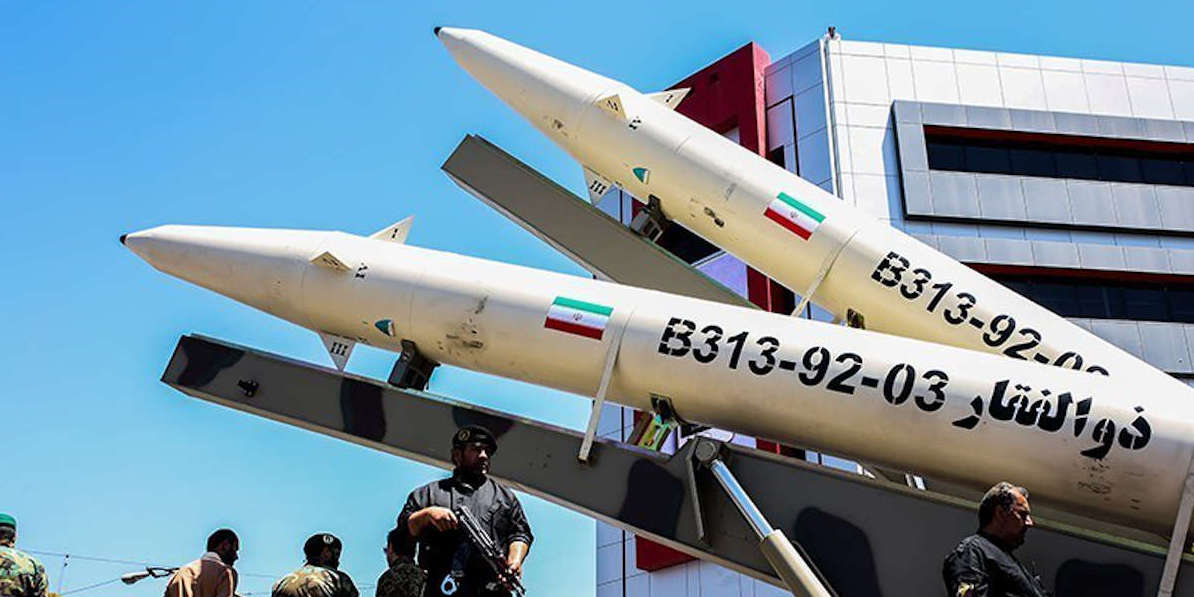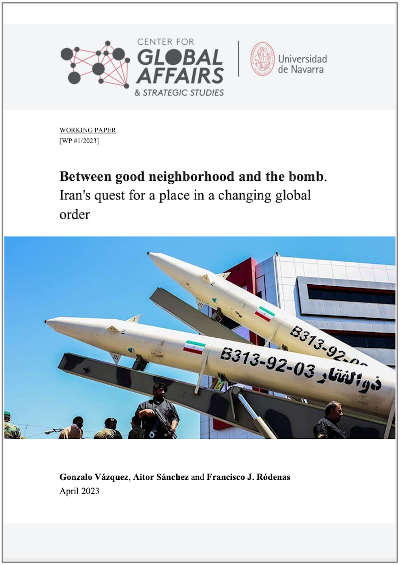In the picture
The Zolfaghar missile, 2017 [Tasnim News Agency].
EXECUTIVE SUMMARY
What does the future hold for Iranian regional aspirations and nuclear ambitions?
The following working paper focuses on the growing influence of Iran across the Middle East region and its main geopolitical trends. It examines the main underlying geopolitical influences in Iranian strategic thinking, particularly focused in its relations as a regional power with other external actors, namely Russia, China, Turkey, the EU and the United States. Concerning the latter of them, the report pays special attention to Iranian efforts in the development of nuclear capabilities. After the failure of the JCPOA, several scenarios could take place, especially now that Tehran is believed to have enriched sufficient uranium to build a simple, compact nuclear bomb. Thus, through the elaboration of a prospective analysis, several drivers are identified so as to draw conclusions about the medium-term future of the republic, further complemented with the brief elaboration of two plausible scenarios.
With the outbreak of the conflict in Ukraine, and its adverse consequences for the entire continent, the current global order is now experiencing a change in its traditional drivers. New actors are emerging with capacity to influence and exert power across different regions of the world. Iran finds itself in the midst of finding a place in such order; a place that may imply shifting its traditional focus on the West to look Eastward. Chinese growing influence in the region is bound to keep growing and will be a determinant factor in the future of the region, as will also be Tehran's development of nuclear capabilities and Israel's subsequent response.
In general terms, this report has found that:
√ Iran is more likely to make a strategic shift towards Russia and China rather than engaging in further dialogue with the US and the European Union, especially with the growing influence China will have in the Middle East.
√ The current wave of social unrest and protests is not as the events of 2011. The Regime does no longer have the same level of support, and the future of the current system in Iran will largely depend on the outcome of these.
√ Tehran will most likely achieve nuclear capabilities before the end of 2024, and it won't be longer until they are able to launch nuclear missiles. Agreements over the JCPOA are highly unlikely to happen, given the distanced positions between both sides; and it would be useless considering the terms of the original agreement are almost over.
√ With the most recent agreement between Tehran and Riyadh, tensions among the Gulf States and Iran will depressurize to some extent, leading to the establishment of diplomatic relations between both and a decrease of Israel's influence in the region.
√ The withdrawal from Afghanistan by the US will not offer Tehran greater influence in the country, as Tehran does not recognize the Taliban government and still faces several issues which could potentially lead to an escalation of tensions in their shared border.
√ In spite of European need for oil imports, Tehran is more likely to align with Russia and China rather than with the Western block. Chinese investments could be the substitute for it, and Tehran can be expected to keep supplying Russia with weapons and drones for the conflict in Ukraine.
√ In the light of this cooperation, Iran can be expected to increase its global role throughout 2023 and 2024, leading to the configuration of an anti-Western block with the three countries.


